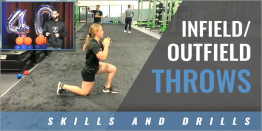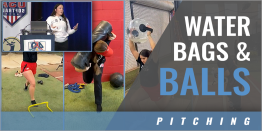| Helping Pitchers Get Through an Injury |
| By: Megan Brown, Ph.D. - Assistant Coach, Boston College
Originally Published in: Fastpitch Delivery Provided by: NFCA It might be season ending or just require them to miss some practice time, but regardless of the severity, it is vital for coaches to help them through the return-to-play process. Many times, a player with an injury will struggle with not getting to do what they are typically able to do or want to do. This is why it is important for coaches to understand what their true limitations are, and what they can do safely that will allow them to continue to grow in their skill set so they do not feel behind upon returning to the field. Every injury will be unique, and I understand that there are injuries that completely take a player out of practice, play and participation, but barring that situation, there are a few things I have found that are crucial to helping pitchers return to play. The first is a coach must understand what the injury is, how it was caused and what limitations or adjustments this injury will require. This starts with a conversation with your sports medicine staff. You do not have to be a doctor to understand what an injury is and how it will affect the player, but you might have to ask some questions or even do some research. Understanding exactly what is injured and causing the issue will allow you to not only better help the athlete understand why they are having a reduction in practice or playing time, but also help them not to cause further injury by ignoring symptoms. The second part is understanding what is known as the mechanism of injury, or what caused this problem. Some are obvious. Your pitcher twisted her ankle coming off the mound for a ground ball. Some are not as easily understood. This is more typical if you have a chronic or overuse injury. By understanding what movement patterns cause pain or injury will allow you as a coach to analyze their mechanics to determine if an adjustment can be made. Many times, a mechanical change can cause a reduction in pain or even eliminate the injury risk all together once it is healed. Many overuse injuries are caused by mechanical issues that either put joints in a position that they are not intended to be or move in a direction they are not designed to. Or it can be that the power a pitcher is building off the rubber is being dissipated through a joint that was not designed to have that type of load placed upon it. All of these situations can cause a lot of issues for a pitcher, but they can also be adjusted and not adversely affect their pitching ability. In fact, many times the adjustments can actually enhance their speed, movement and control. Another thing to do as a coach is to think outside the box in how they can participate during practice. For instance, a pitcher with a lower-body injury would typically be put on crutches and very limited in what they can do. Well, the crutches are probably not going to help her shoulder feel very happy, but what if you used one of the scooters they have for people with lower-leg injuries? She could then roll around easily while not putting undo strain on her shoulder. She could also do arm circles, wrist snaps and a host of other arm exercise for pitching with her knee safely resting on the scooter. This will allow her arm to stay in shape, work on spin and hand speed, and keep her from feeling as if she is far behind when she returns. The key is to remember that your sports medicine staff is a wonderful resource and a help to your team, but they will not always be as familiar with all of the drills and options for practice that you will be as a coach. That is why it is so important to understand the injury, so that you can work in conjunction with the sports medicine staff to allow your pitchers the least restrictive recovery possible. The last piece is to have a clear plan and discuss it with your pitcher. When pitchers understand what their injury is, what they can still do, and, most importantly, what they will be improving while they are healing, they will have a greater chance to get the most they can out of their injured time. Great players want to get better every day. When injuries occur, they can struggle with not being able to practice. But when they have a clear plan, goals and skills to improve upon, the process can at times be a great learning and growing experience for them. Unfortunately, life has injuries and setbacks. These will either make one bitter or better. It is a conscious choice which one it will be. As coaches, we never want to see our players injured, but when it happens, it is up to us to help them so that they opt to choose to become better and not bitter. |







